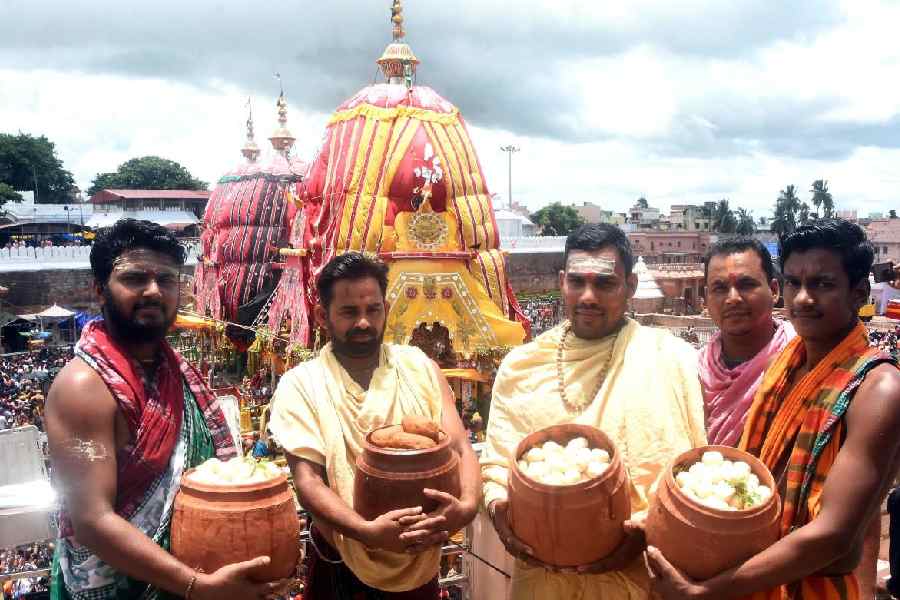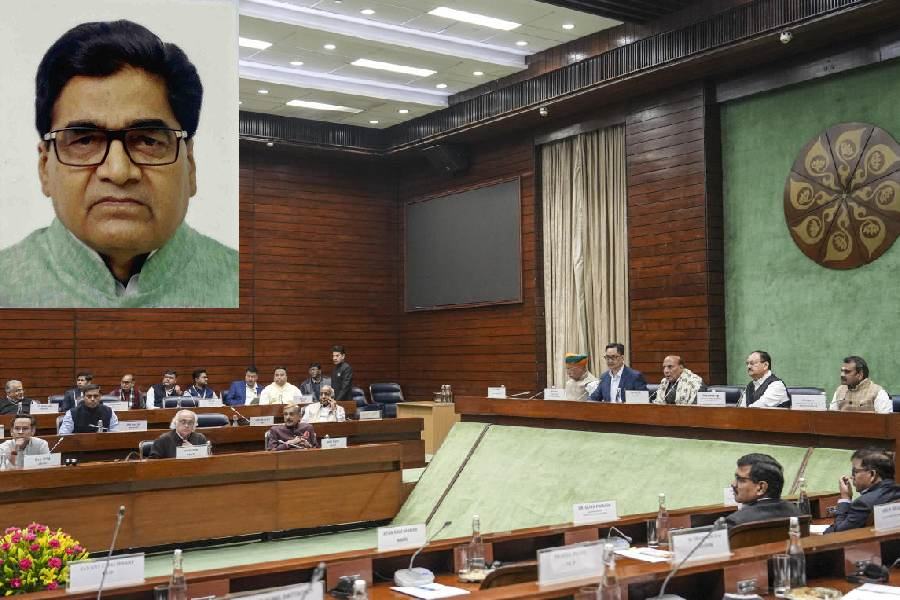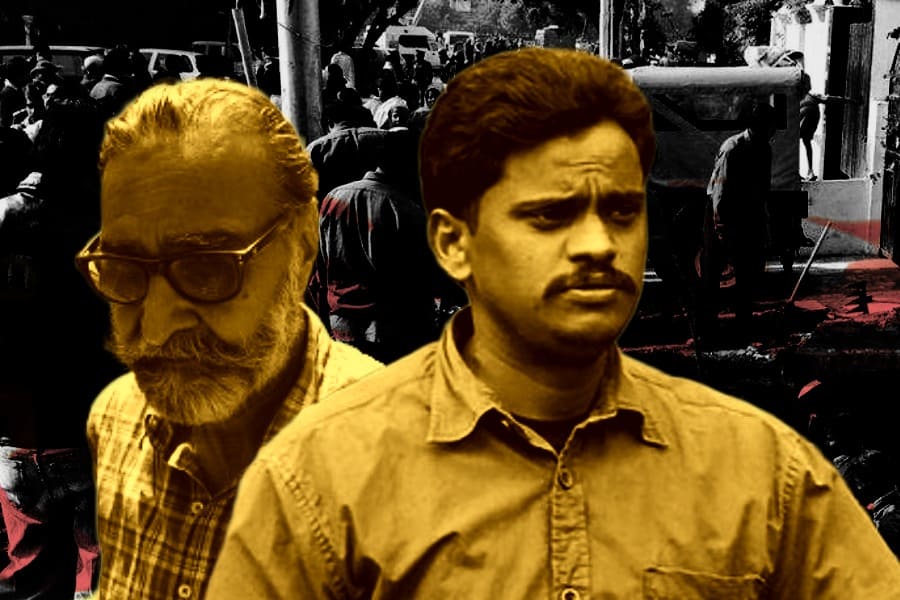The annual Rath Yatra of Lord Jagannath and his siblings concluded in Puri with the deities being ceremonially carried into the Jagannath temple on Tuesday.
The ritual, known as Niladri Vije, marks the deities’ return from their sojourn to the Shree Gundicha Temple — their birthplace — in what is the only time of the year they leave their sanctum to meet devotees across caste, creed and religion. Till the filing of this report, no untoward incident had been reported.
The day also marked Odisha’s celebration of Rasagola Divas, reaffirming the sweet’s deep association with Jagannath culture. Thousands of devotees offered rasagola to the deities on the chariots and later shared the sweet among themselves.
Believed to have been part of rituals since the 12th century, rasgulla is intrinsically linked to Jagannath lore.
Senior servitor of the Jagannath temple, Jagdish Das Mohapatra, explained the ritual’s significance: “Goddess Laxmi is upset that Lord Jagannath leaves with his siblings on the Rath Yatra without taking her along. To appease her, the Lord offers rasagola and only then is he permitted to re-enter the temple. It is a message to the world — always try to keep your wife happy.”
Scholars have traced the origin of rasagola to Odisha through references in the 15th century Dandi Ramayan and other scriptures, Mohapatra said. The sweet has been an integral part of the state’s religious and culinary tradition “since time immemorial”.
The cultural tug-of-war over the sweet’s origin between Odisha and Bengal ended with both states receiving GI (geographical indication) tags.
While Bengal earned its tag in November 2017 for Bengal roshogolla, Odisha was awarded the tag for the Odisha variant in July 2019. The GI registry has clarified that the two variants differ in taste and texture.











